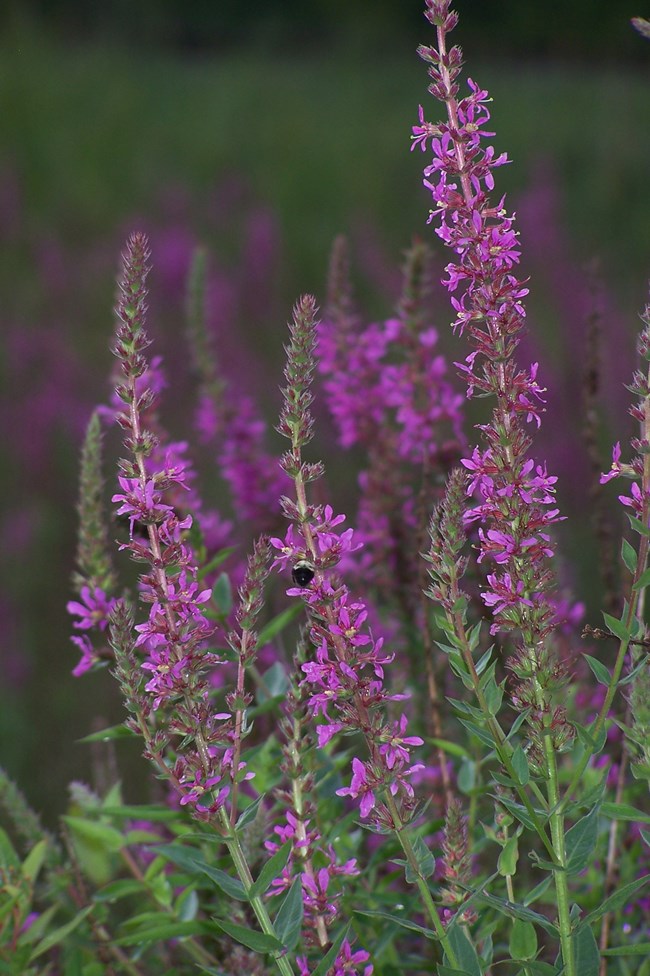
NPS / Arrye Rosser Purple Loosestrife, Lythrum salicariaPurple loosestrife is a tall erect perennial with a woody taproot and a branching, fibrous root system. A single loosestrife stalk may produce as many as 300,000 flat thin-walled seeds. This plant is capable of invading many wetland communities including wet freshwater meadows, river and stream banks, pond edges, reservoirs, and ditches. IdentificationThe most obvious characteristic is the magenta flower spikes. Look also for a square stem and opposite, stalk-less leaves. OriginPurple loosestrife was introduced in the 1800s from Europe and Asia as an ornamental and medicinal plant. Though still widely sold as an ornamental in the United States, its sale is prohibited in Ohio. How It SpreadsPurple loosestrife spreads through a huge abundance of seeds, dispersed by wind and water. A mature plant can have 30 or more stems from one rootstock, and can produce up to two to three million seeds per year. It also spreads vegetatively through underground stems at a rate of one foot per year. Control MethodsA mechanical approach is only recommended for new infestations of less than one hundred plants. Hand pulling should be done in early to mid-summer before seeds develop and result in removal of as much of the plant as possible since small, remaining fragments can grow into new plants. Removed plants should be bagged. |
Last updated: March 3, 2022
